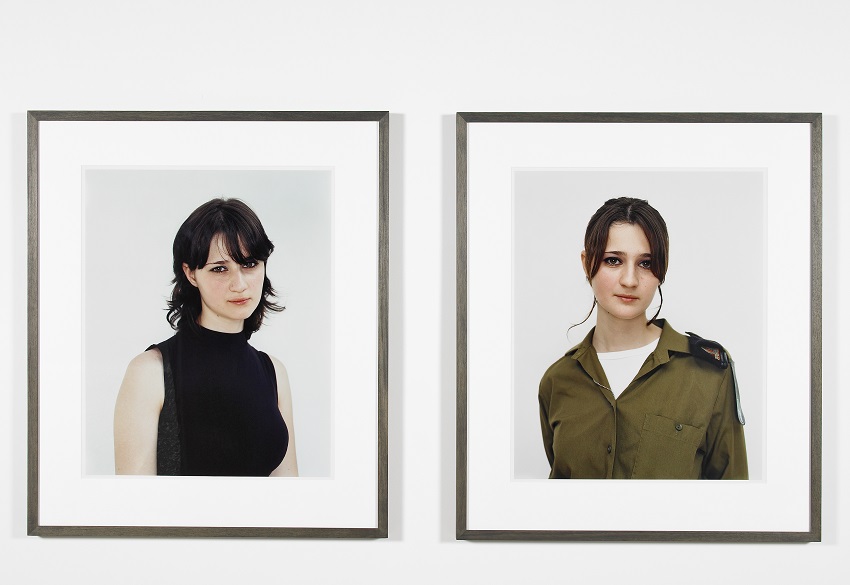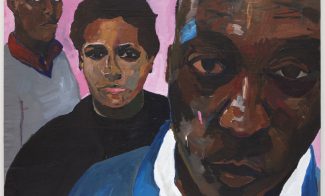Evgenya first saw me when I was a teenager, 14 or 15. She was about 18 and still is. Her double gaze found me many times in those first months I visited the gallery, in groups and alone, under the purview of various volitions, and by the fortune of my deepening familiarity with the museum. In time, the room became organized around her.
There are two Evgenyas present. At first, I was not sure.
Evgenya on the left reminded me of someone I knew, and I was sympathetic to her physical presentation. I wore dark clothes and my hair fell over my eyes; these made up the compass by which I navigated my young world, and thus Evgenya was someone that I could know, and would have wanted to. Her tensed brow and just turned neck had a secretive trepidation which I felt empathized with me.
Evgenya on the right and I did not know each other. Her role is clear from her clothes – gently worn, rusty, olive fatigues – in a way that was both alien and parallel to a young person in an art program, who thought they may become an artist. Yet I envied her relaxed, hidden arms and her calm, confrontational face.
There are two Evgenyas present, and I learned to see each in the glass of the other.
Rineke Dijkstra’s camera takes its place on either side of a decisive event – the start of compulsory military service. I feel for Evgenya a hovering respect and a delicate protectiveness. Something of a violence seems to have already taken place, and not one implied by political context. She changes between the photographs, so my instinct is to parse out this difference. Evgenya also stays the same; she may indeed have become herself. In the photographs, Evgenya is emergently revealed to herself and separated from herself; though it reminds me of lepidoptery – skewered butterflies preserved in cabinets – it is not photography that does this.
Most of my recent sojourns to the fourth floor have been with groups of teens participating in out-of-school programs. In past years we have been able to encounter Almerisa, also photographed by Dijkstra. More than once, gathering my group at the end of the last hour, I have sighted a teen lingering in her estimation, still absorbing her multiplicity. I think this kind of work, which follows on the heels of yet also keeps ahead of life, has an especial effect on young people, who are in the midst of such rapid outward change themselves – surely committed to the still image in even more frequent intervals than we see of Almerisa.
I’m excited for Evgenya to return this fall. I look forward to encountering her abiding change, which I expect to see with new eyes. And when I am in her view, her gaze will ask me, and ask me to ask myself, how have I changed? My hair and dress are different from when I was younger, reflecting altered station, altered world – but I hope that I have developed the soft, sure eyes which I have admired of her for so many years, with which to see others and myself.
Montgomery Alcott is the Teen New Media Program Assistant at the ICA. He cooks and reads.
Friday Art Notes are personal reflections on works of art shown or in the permanent collection of the ICA, written by ICA staff, volunteers, and supporters. Read more

